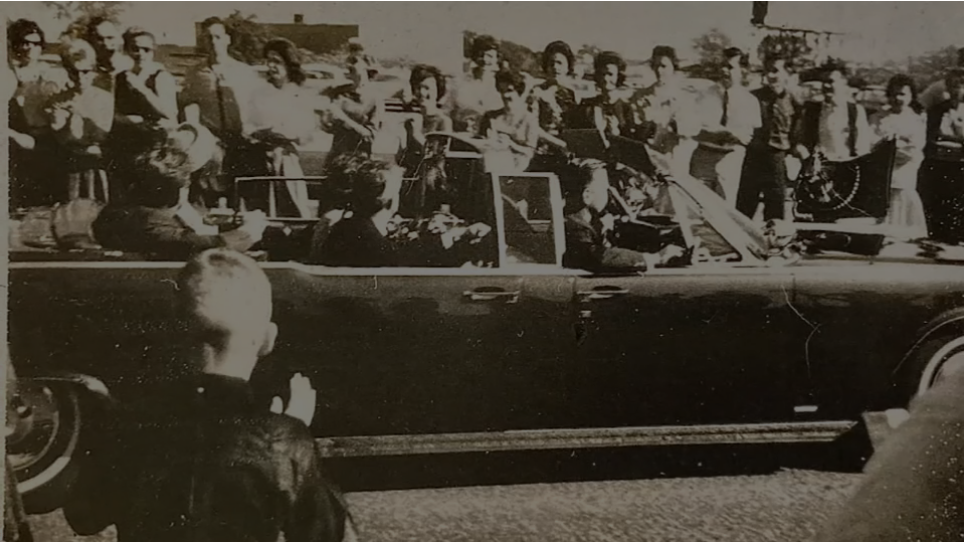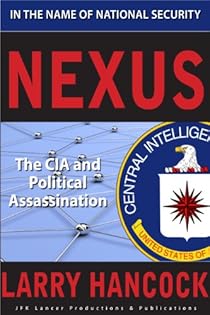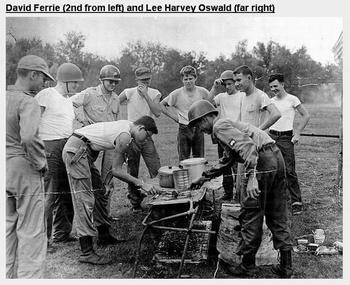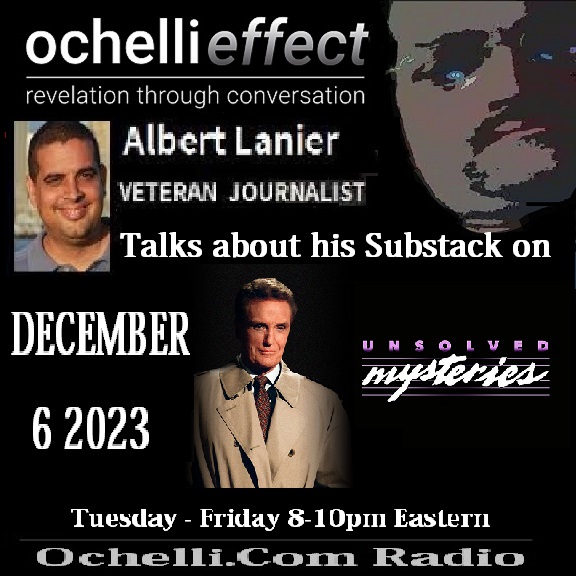Underhill had expressed his fears that a ‘clique within the CIA’ had been involved in killing JFK.
By Larry Hancock

The recent re-release of JFK files has once again surfaced a discussion of Garett Underhill, an individual I first researched and wrote about in Someone Would Have Talked, some twenty years ago. At that point I was taken by the fact that the weekend of President Kennedy’s assassination, Underhill had expressed his fears that a ‘clique within the CIA’ had been involved in killing JFK. According to Underhill, that clique had included CIA officers involved in illegal smuggling activities (involving both weapons and drugs); the individuals in the ‘clique’ had actively opposed JFK’s foreign policies, and they had unilaterally acted against the President. That was a description that generally matched the conspiracy scenario which had developed during my first decade of research into the assassination.
 What was especially intriguing to me was that certain of Underhill’s remarks matched what we were beginning to learn about a new and highly secret CIA anti-Castro operation, a project that was beginning to come into play during the fall of 1963. Beginning in late summer of that year, the operation began the process of covertly purchasing large amounts of deniable weapons, sourced from Europe. Beyond that it was a project we learned to have been led by a senior CIA officer with a long-time connection to Southeast Asia – and to CIA activities in
What was especially intriguing to me was that certain of Underhill’s remarks matched what we were beginning to learn about a new and highly secret CIA anti-Castro operation, a project that was beginning to come into play during the fall of 1963. Beginning in late summer of that year, the operation began the process of covertly purchasing large amounts of deniable weapons, sourced from Europe. Beyond that it was a project we learned to have been led by a senior CIA officer with a long-time connection to Southeast Asia – and to CIA activities in
the Golden Triangle, the source of most of hard drugs being smuggled into the United States during the 1960’s.
Underhill’s own background and connections were impressive, directly related to his long-time work in monitoring and consulting on foreign military matters related to weapons, in particular international weapons sales, and global shipments of arms. He had served as an advisor on weapons to LIFE magazine during WWII (of enough value to gain a military service deferment for his work), and afterwards served as an military/weapons analyst for several publications including Collier’s magazine, Fortune, Esquire and The Washington Post
His special expertise with weapons had led him into consulting work for the Army during the 1950’s and, most importantly, into becoming a business associate of Samuel Cummins. Cummings himself had parlayed a CIA relationship into the founding of a global weapons sales company – International Armaments Corporation (INTERARMCO). During the 1950’s/60’s INTERARMCO had become the world’s largest military and weapons trading company – supplying deniable equipment and arms for many of the CIA’s regime change projects.
Details on Cummins, INTERARMCO and Underhill’s relationship with both are covered in my book Shadow Warfare. While Underhill himself never worked for the CIA, his relationship and access to Cummings was a vital source in maintaining his knowledge of what was going on with arms shipments (including clandestine shipments) around the world – a valuable window into the world of covert military activities (and the smuggling and corruption that goes along with it).
Underhill’s immediate post-assassination fears were based in a concern that members of the CIA ‘clique’ was aware of him, of his knowledge of their activities, and that he posed a threat to them because of that knowledge. Beyond that he had several personal problems, being separated from his wife and at loose ends in his own life. After breaking contacts with several longtime friends, he died in a reported suicide several months after JFK’s murder. All of which leaves us with the question as to the source of his fears, and concerns as well as to whether sch a “clique within the CIA” might have existed.
In 1963, Underhill was working for Fortnemagazine, with a particular interest in Cuba and with the rumors that Russian missiles had not all been withdrawn from Cuba following the Cuban Missile Crisis settlement with the Soviet Union. Given that interest and his connections its highly likely Underhill would have heard of a secret CIA mission that occurred that summer – a highly political mission (unknown to and not authorized by JFK) to bring out Russian missile technicians and take them into Congressional hearings to dramatically embarrass President Kennedy with testimony that he had been fooled by the Russians. The mission had aborted, but it certainly did reveal the extent to which a certain CIA clique was willing to act at its own initiative, against the administration.

By the fall of 1963 Underhill’s INTERARMCO sources would also have made him aware of what would have been a new and highly deniable activity by CIA officers which involved shipments of weapons and equipment going into the Caribbean. The shipments appeared to be to anti-Castro Cubans, involved in a new effort military effort to overthrow the Castro regime. Yet officially and publicly JFK had ordered that the US would not be involved with further actions against Cuba.
The weapons, equipment and even ships were being purchased by a group headed by a SE Asia CIA veteran, Henry Hecksher. Hecksher had been CIA station chief in Laos, later in charge of CIA covert activities in the Golden Triangle region. From Underhill’s position it may well have seemed that the new project was a direct violation of JFK’s orders to turn off American support for Cuban exile missions against Cuba. Given that the funding for the purchases was coming though Swiss banking accounts and handled through offices outside the United States, there was every appearance that the activities were not sanctioned by the US government.
What Underhill would not have learned known was that what appeared to be a very illegal and rogue operation – one being carried out in opposition to JFK’s policies – was indeed an officially sanctioned CIA project (AMWORLD), personally endorsed by Robert Kennedy. For the purposes of deniability, even though sanctioned, it was buried so deeply that its military recruits were told the Kennedy’s had abandoned them and had become traitors to their movement to oust the Castro regime. The approved story was that new overseas donors had stepped up and the new effort would be able to proceed in the fact of JFK’s directive publicly removing the U.S. from anti-Castro efforts.
While we know all that now, we can only speculate that at the time Underhill might well have reached the conclusion that CIA officers out of SE Asia had gone rogue, using their established connections to get weapons to support anti-Cubans working in direct opposition to JFK’s announced policies. Underhill also might have feared that his own inquiries about Cuba, about the new weapons shipments and the new military effort, had been shared with the CIA officers involved.

Perhaps Underhill’s specific fears related to the new CIA project have been meaningless, however his idea that a ‘clique within the CIA’ which opposed JFK’s foreign polices is a separate issue. What we have learned about the TILT mission shows that certain CIA officers were aggressively opposed to JFK’s policies, enough so to willingly take actions which threatened him and his administration politically. That is now a matter of historical record.
Whether or not that same clique was willing to go beyond political action in opposition to the president remains a separate question.
END ARTICLE
Additional Reading Says OCHELLI.COM
JFK files: Who is ‘Gary Underhill’ in assassination files?
https://www.newsnationnow.com/politics/jfk-files-who-is-gary-underhill-in-assassination-files/
Someone Would Have Talked Paperback – Illustrated, November 1, 2010
by Larry Hancock (Author), Debra Conway (Editor)
Shadow Warfare
The History of America’s Undeclared Wars
Stuart Wexler & Larry Hancock
OBITUARY
Former CIA officer HENRY D. HECKSHER, 79, died Wednesday of Parkinson’s disease. A native of Hamburg, Germany, he served as a judge there before emigrating to the United States in 1938. He rose to the rank of captain in the U.S. Army, participated in the Normandy invasion and was wounded in Antwerp, Belgium. Hecksher later became an Army intelligence officer and interrogated some top Nazi leaders. He joined the Office of …
https://www.cia.gov/readingroom/docs/CIA%20AND%20NAZI%20WAR%20CRIM.%20AND%20COL.%20CHAP.%201-10%2C%20DRAFT%20WORKING%20PAPER_0004.pdf
Cryptonym: AMWORLD
https://www.maryferrell.org/php/cryptdb.php?id=AMWORLD
The War State: The Cold War Origins Of The Military-Industrial Complex And The Power Elite, 1945-1963
Why The Vietnam War?: Nuclear Bombs and Nation Building in Southeast Asia, 1945-1961












Leave A Comment